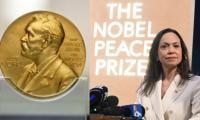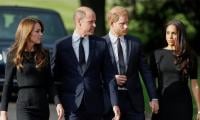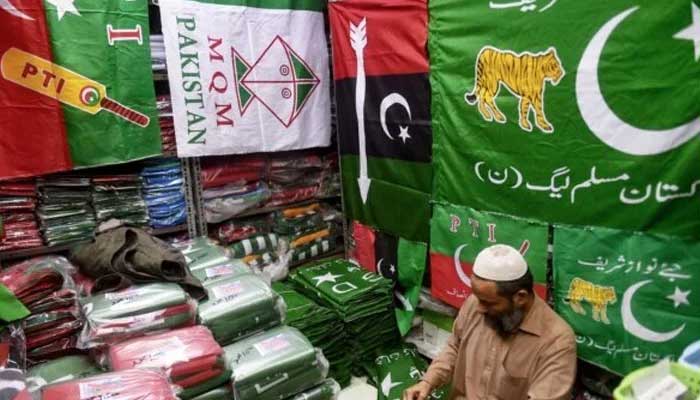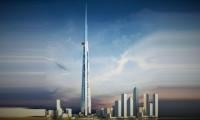The era of old politics is over
PTI is most popular party in Punjab and KP, despite its leader, Imran Khan, being incarcerated in Adiala Jail
The political landscape of Pakistan over the last five decades has reached a critical juncture, with its major political parties either in decline or approaching irrelevance. The Pakistan Peoples Party (PPP), once a formidable force, especially in Punjab, lost its footing as far back as the 2013 elections. Despite concerted efforts by the shrewd Asif Ali Zardari and the youthful energy of Bilawal Bhutto, the PPP has failed to revive itself in the province.
The Pakistan Muslim League-Nawaz (PML-N), which enjoyed unparalleled popularity in Punjab for nearly three decades and frequently alternated between opposition and government, has also seen its glory fade. Its narrative unravelled after its unholy alliance with the establishment, eroding its credibility among supporters. This alliance, forged without consulting its base, marked the beginning of the party's decline, culminating in a massive loss of popularity. Adding to the damage has been the prolonged absence of its leader, Nawaz Sharif, from the country and the ineffectiveness of its second-tier leadership.
The Pakistan Tehreek-e-Insaf (PTI) is the most popular party in Punjab and Khyber Pakhtunkhwa, despite its leader, Imran Khan, being incarcerated in Adiala Jail for over a year. While the PTI dominates the political narrative, its success in free and fair elections may be fleeting. If it returns to power, its lack of organisational discipline, governing capacity, and strategic vision could lead to a rapid downfall. The PTI’s popularity among the people is undeniable. Still, its strained relations with state institutions, coupled with its chaotic internal structure, paint a grim picture of its sustainability as a governing force.
So, the top three political parties in Pakistan appear to have only a few years of relevance left before fading into political obscurity. This inevitable decline will create a significant vacuum in the political landscape, necessitating the emergence of something new as a natural progression. This could take the form of a fresh political party or a new leader, likely supported by splinter groups from the old, stagnating, and disintegrating forces.
Pakistan’s political parties have historically followed a lifecycle akin to that of human beings – birth, maturity, and eventual demise. Parties like the Republican Party, Convention League, PML-Q, and PPP-Patriots once held sway but are now relegated to history. Their downfall underscores a harsh reality: political parties remain relevant only as long as they serve a purpose and resonate with the times.
Age, both physical and political, plays a significant role in this decline. Pakistan’s top political leaders – Nawaz Sharif (74), Shehbaz Sharif (72), Imran Khan (72), and Asif Zardari (69) – are all well past the national average life expectancy of 67.94 years. May they live long! With no robust second- or third-tier leadership, these parties face an existential crisis as their ageing leaders struggle to stay relevant in an evolving political landscape.
The decline of the PPP and PML-N in Punjab has created a vacuum that the establishment seems eager to fill. Historically, new political forces in Pakistan – such as the aforementioned Q League and Patriots – have often been creations of the establishment, designed to counter popular but inconvenient narratives. With the PML-N’s and PPP’s weakening grip and reluctance to fully embrace the establishment’s anti-PTI stance, a new political entity appears imminent.
Such a party would likely champion a development-oriented, patriotic narrative aligned with General Asim Munir's 'Hope' doctrine, providing a counterweight to the PTI. However, this engineered approach risks repeating past failures, as such parties often lack organic support and crumble once their utility to the establishment wanes.
The PML-N’s current state is particularly dire, with internal discord further eroding its effectiveness. While Nawaz Sharif remains the party’s supremo, his relationship with Shehbaz Sharif’s government is strained. Key decisions, such as the expansion of the federal cabinet, have been stalled by Nawaz’s reluctance, highlighting a lack of cohesion between the party’s political and governmental wings.
Moreover, tensions between Shehbaz Sharif and Maryam Nawaz, who leads Punjab, have created further disarray. Despite their familial ties, their divergent strategies and priorities have resulted in a fragmented approach, weakening the party’s ability to present a united front.
In an ideal scenario, a grassroots political movement led by the middle class could emerge to fill the void left by the decline of traditional parties. However, given Pakistan’s political history, it seems more likely that the establishment will orchestrate the creation of a new party, built on the ruins of the PPP, PML-N, and defectors from the PTI.
This new entity would serve as a vehicle for the establishment’s narrative, prioritising stability and development while countering the PTI’s populism. Yet, the longevity of such a party would depend on its ability to establish genuine connections with the masses – a challenge that has undone similar projects in the past.
As Pakistan approaches this critical crossroads, the diminishing relevance of its major political players underscores a larger truth: political survival depends on adaptability, relevance, and a genuine connection with the people's aspirations. Whether the country’s next political force will embody these qualities or merely echo the failures of the past remains to be seen.
The writer is the editor of Jang in Lahore, an anchor, and the executive director at Geo TV.
-
 Meghan Markle Sparks Reactions With UK Return Plan
Meghan Markle Sparks Reactions With UK Return Plan -
 Mark Ruffalo Expresses Strong Political Opinion
Mark Ruffalo Expresses Strong Political Opinion -
 Johann Wadephul Reaffirms Close Ties Ahead Of High-stakes Washington Visit
Johann Wadephul Reaffirms Close Ties Ahead Of High-stakes Washington Visit -
 TimInside Timothee Chalamet Bond With 'Marty Supreme' Costar Fran Drescher
TimInside Timothee Chalamet Bond With 'Marty Supreme' Costar Fran Drescher -
 Samsung Galaxy May Add IPhone-like Calling Card Feature
Samsung Galaxy May Add IPhone-like Calling Card Feature -
 Nobel Institute Rejects Maria Corina Machado's Suggestion, Says 'Nobel Peace Prize' Is Non-transferable
Nobel Institute Rejects Maria Corina Machado's Suggestion, Says 'Nobel Peace Prize' Is Non-transferable -
 Prince William Takes Bold Move Amid Meghan Markle's Plans To Visit Britain
Prince William Takes Bold Move Amid Meghan Markle's Plans To Visit Britain -
 'Stranger Things' Star Recalls Emotional Last Day On Set
'Stranger Things' Star Recalls Emotional Last Day On Set -
 Briton Smith Stops Matias In Five To Win The WBC Title
Briton Smith Stops Matias In Five To Win The WBC Title -
 Kelly Clarkson Opens Up About Her Kids After Their Dad Passing
Kelly Clarkson Opens Up About Her Kids After Their Dad Passing -
 Google Removes AI Health Summaries After Safety Concerns
Google Removes AI Health Summaries After Safety Concerns -
 Meghan Markle, Prince Harry Warned About Ultimate High-stakes Gamble: 'It's A Bloodbath'
Meghan Markle, Prince Harry Warned About Ultimate High-stakes Gamble: 'It's A Bloodbath' -
 George Clooney Claps Back At Quentin Tarantino For 'cruel' Remarks
George Clooney Claps Back At Quentin Tarantino For 'cruel' Remarks -
 Scientists Discovered Never-before-seen Creature In Great Salt Lake
Scientists Discovered Never-before-seen Creature In Great Salt Lake -
 Three Viruses You Need To Watch Out For In 2026
Three Viruses You Need To Watch Out For In 2026 -
 Musk Says UK Targets Free Speech As X Faces Ban Over Grok AI
Musk Says UK Targets Free Speech As X Faces Ban Over Grok AI




